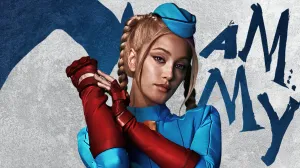In the anime community, there are just some words that you shouldn’t say. Dragon Ball GT, fan service, and cancellation are three of the biggest no-no’s, but there is one word which reigns above even them. If you have a death wish or wish to end up in a Death Note, then you better not say: filler.
Videos by ComicBook.com
When it comes to anime, it seems like some series just cannot avoid the use of filler. For those of you who are unfamiliar with the term, filler is simply short for filler episodes, the bane of every anime fan. Filler episodes constitute of non-canon stories animated for series such as Naruto or One Piece that have no basis in any manga. Studios like Pierrot will create their own stories which diverge from the main plot of a manga, and fans often find themselves face-palming over the pointless fluff.
Anime has become increasingly crowded with filler episodes and even entire arcs, and fans continue to push back against the phenomenon online. Viewers are often unsure of why these bridge stories are even made, but there is a point behind it all – really.
However, that doesn’t mean fans will necessarily approve of the reasoning for blasted fillers.
While anime is cheaper to produce than many Western shows due to labor contracts, the medium still won’t take a risk on unproven stories. Of course, this is why anime is adapted from sources like manga or light novels, and franchises last so long as they are on air. Each year, more series debut and create competition amongst both indie and top-tier studios, and fillers are used to keep fans engaged with some of Japan’s most popular series.
Filler is not nearly as common in short, one-off anime series such as Ouran High School Host Club, but they are prolific in shows like Naruto. Long-running shonen series are the most susceptible to the infection, and it is precisely because of their length that filler is used. For extensive manga like One Piece or Naruto, anime adaptations have a wealth of information to pull from, but that pool will eventually run dry. Anime’s cheaper cost makes it very time efficient, and animation on a show can be done more quickly than inking a manga page.
In order to protect popular franchises from running out of material, studios often created padding to ensure shows like Bleach would not have to go on hiatus or even be canceled. Filler is what happens when an anime either catches up with its source material or is expected to in the near future.
Of course, there are some fans who would prefer to see an anime like Naruto come to a halt when filler would become necessary; However, money and status is what keeps popular series bogged down with filler arcs. Anime is more competitive now than ever before, and even a few weeks off the air can spell disaster for revenue and ratings.

Fans may despise filler or wonder why it’s even needed, but those episodes are necessary evil in the industry. Without the bridge, there would be no connective tissues bringing together key manga arcs. Take Dragon Ball Z for instance; The acclaimed series is famous for its action-packed arcs, but each one is held together by filler which helped Toei Animation keep the anime on air.
As for the quality of filler episodes – well, that is an issue best left to the studios themselves. While some creators are willing to develop canon storylines for anime to explore in filler, most are all too happy to let an animation studio come up with a plot. And, as fans know, those results can be more than a little tumultuous.
MORE ANIME: AoT Editor Arrested on Murder Charges | Mobile Suit Gundam | Goku voice actor was almost a villain








